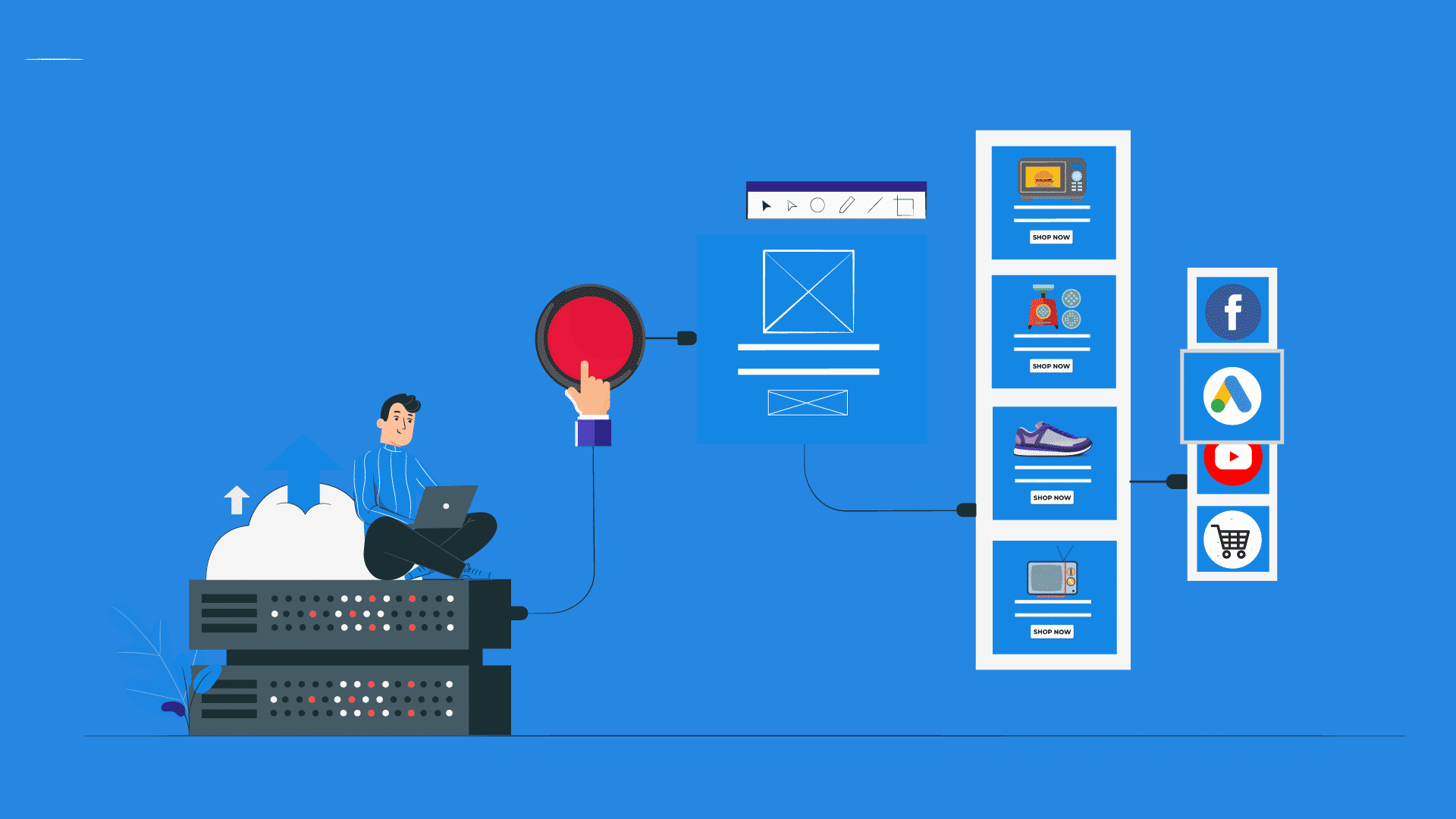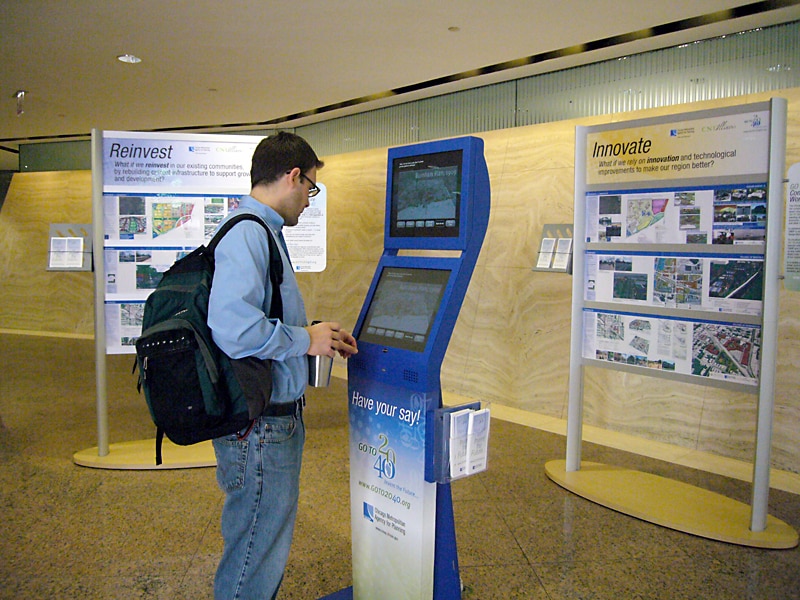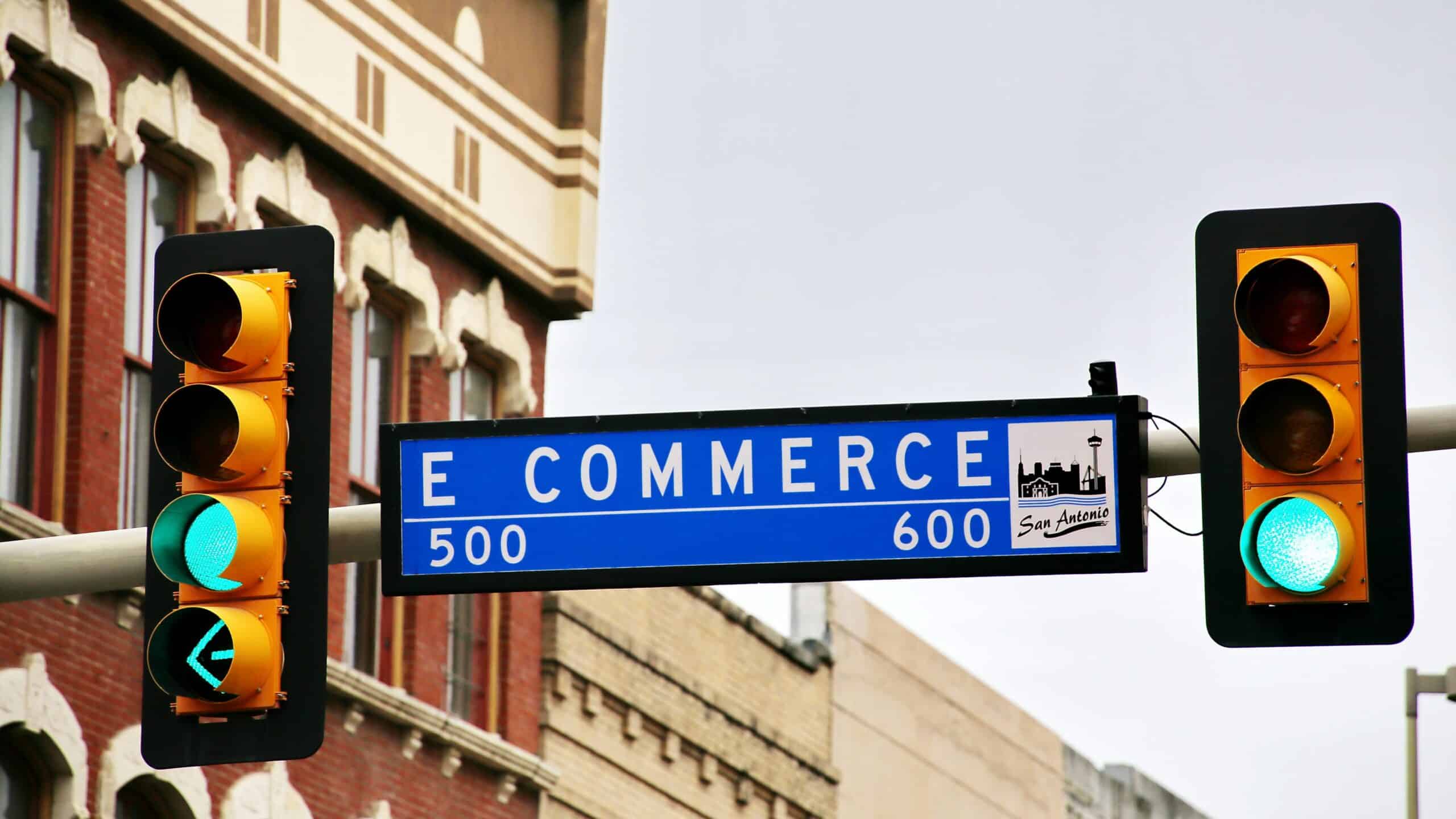Scale creation with Creative Automation
Automate the creative production process with templatized creation, feed-based scale, and multi-point integration.
Learn more
Automate the creative production process with templatized creation, feed-based scale, and multi-point integration.
Learn more
Over the past few years, businesses have become customer-centric rather than product-centric. A marketing company’s strategies prioritize digital technology for better customer engagement. According to the WBR analysis, 80% of retailers see the widespread introduction of interactive self-service kiosks as a top goal for the coming years.
An interactive kiosk is a device with integrated software that allows the user to obtain the necessary information, take a certain action, and make a money transaction. The main purpose of the kiosks is self-service, i.e. a person can complete the entire process of buying/familiarizing themselves with the product right in the store without authorized persons. It is provided with an intuitive interface.
Today there are 4 types of interactive kiosks, each of which will find its own application in retail:
Devices that help to perform various operations to save time. They are usually performed by in-house salespeople. These include:
Provide all the necessary data about a product, service, or event. They are placed in shopping centers for navigation and advertising, in museums for presentation demonstrations, in hospitals to inform about the specialist’s work schedule and prices for his/her services. The main objective is to compose correct, relevant, and not cumbersome content to provide a comfortable reading experience.
Bright screen with luscious ads that can be static or interactive.
Devices based on 3D modeling help people get from point A to point B by generating different routes. Realistic objects are visible on the map, and some of them can be seen from the inside.
There are also internet kiosks. They are used on a paid or free basis to access the Internet.
Interactive kiosks can be used in a variety of scenarios. When implementing a kiosk software solution, retailers have the right to choose the kiosk’s purpose of use and request the most fitting features for it.
To create an omnichannel trading environment, the use of kiosks with online ordering right on the territory of the store is suitable. This will help eliminate the loss of sale, in the absence of goods on the shelf, and will also allow the buyer to arrange delivery to home/office.
In addition, the interactive kiosk allows you to collect statistics like in online stores, allowing you to create personalized content.

The interactive kiosk is used as:
In addition, the technology can significantly reduce the amount of time spent on customer service. It is convenient both for the users themselves and for the employees. Due to the minimum queue, customers save time, and thanks to the bright advertising sign, store owners get more profit.
Standard interactive kiosks have approximately the same set of functions:
All interactive kiosks are equipped with advertising panels and models that can be customized according to the goals of the advertising campaign.
As a result of the sale of kiosks, the retailer gains the following benefits:
When making a purchase through an interactive kiosk, the consumer wants to feel the most important and valuable among others. Sellers should opt for personalized trading using the following tools:
There are also special tools that monitor the relevant method of payment and delivery of goods, offering them to the buyer first.
In most areas of technology innovation, data security remains the biggest challenge. New tools are invented to provide it, but none of them gives a 100% guarantee that the information will not be used by hackers.
According to SOTI, when choosing personalized purchases or their lack of them, the opinion of buyers was divided:
Retailers need to provide a guarantee of data protection against leakage, hacking, access to a third-party database, and decryption of confidential information. But how to work out this problem as efficiently as possible is still unknown.

For example, in a shoe boutique, only 2-3 sellers work for one large hall. If the buyer asks to bring a pair of a certain size, one of them is removed to the warehouse or looks for a box in the place, and this is the time. If there are 1-2 customers in the store for this number of sellers, it is not so scary, but if there are 10-15 customers, the buyer risks staying in the store for a long time or losing interest by irrevocably leaving the shoe.
To improve the quality of customer service, The Magento Kiosk App by SNOW. DOG has appeared. It allows a shopper in a store to view the entire product catalog on a tablet. When the choice is made and the size is selected, the pair is automatically delivered from the warehouse within 3 minutes. Some stores began to use robots and program the application in their own way.
New York & Company is the only retailer to combine offline and online sales. Interactive kiosks are installed around the perimeter of their stores, where you can evaluate all goods, make a purchase and arrange delivery. Intuitive management and technological capabilities improve the quality of service and, accordingly, increase sales.
Premium jewelry house The Monica Rich Kosann also uses interactive kiosks in their stores, calling it a very sophisticated “white glove shopping”. On the screens, you can see the entire product catalog and evaluate what it is combined with.
According to a SOTI survey, in 2018, 66% of US residents surveyed prefer interactive self-service kiosks to their usual cash registers. 77% of US residents voted to introduce technology into retail trade everywhere.
This indicates the demand for innovative technologies in the retail sector. New features improve the seller/buyer interaction, which means increased demand and sales.
By improving customer experience through technology, retailers will be able to outperform their own competitors.